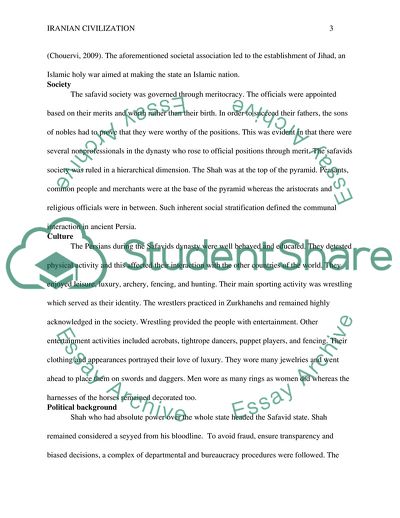Cite this document
(The History of Iranian Civilization Essay Example | Topics and Well Written Essays - 2250 words - 1, n.d.)
The History of Iranian Civilization Essay Example | Topics and Well Written Essays - 2250 words - 1. https://studentshare.org/history/1876369-iranian-civilization
The History of Iranian Civilization Essay Example | Topics and Well Written Essays - 2250 words - 1. https://studentshare.org/history/1876369-iranian-civilization
(The History of Iranian Civilization Essay Example | Topics and Well Written Essays - 2250 Words - 1)
The History of Iranian Civilization Essay Example | Topics and Well Written Essays - 2250 Words - 1. https://studentshare.org/history/1876369-iranian-civilization.
The History of Iranian Civilization Essay Example | Topics and Well Written Essays - 2250 Words - 1. https://studentshare.org/history/1876369-iranian-civilization.
“The History of Iranian Civilization Essay Example | Topics and Well Written Essays - 2250 Words - 1”. https://studentshare.org/history/1876369-iranian-civilization.


